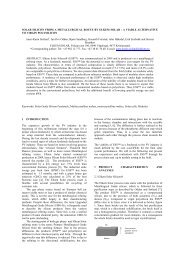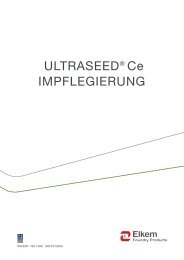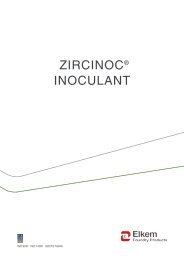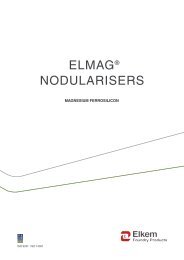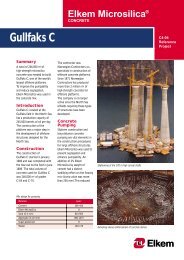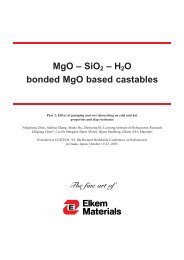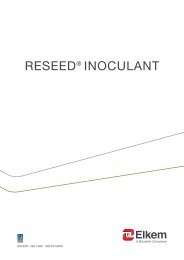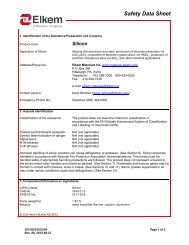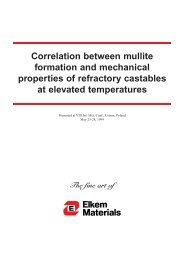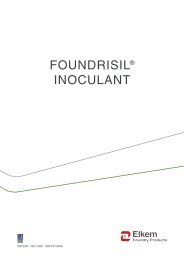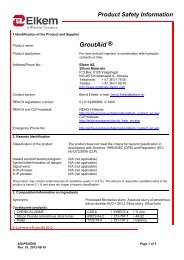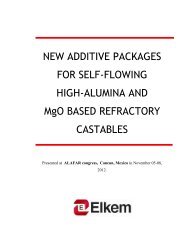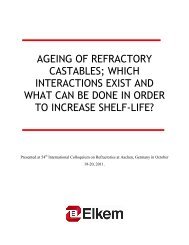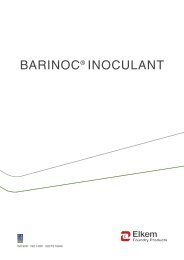Create successful ePaper yourself
Turn your PDF publications into a flip-book with our unique Google optimized e-Paper software.
In this picture, the experimental set-up is<br />
shown. The sample is the cylinder placed<br />
Castables based on white fused alumina:<br />
between the two lightly yellow alumina<br />
discs on top of the set up. Above the<br />
sample is the furnace, which is lowered<br />
onto the sample and the load is regulated<br />
by a set-up with counter weights. It is seen<br />
that this sample has been tested to a<br />
temperature with significant subsidence,<br />
due to the slight drum shape the cylinder<br />
attains during testing with deformation.<br />
As is the case with hot-M.O.R.<br />
measurements, the results can be vastly<br />
different depending on thermal history, and<br />
unless pre-firing conditions are given, the<br />
interpretation of the test may in some cases<br />
be very difficult or close to meaningless.<br />
In the following section, the effect of microsilica and cement content on mullite formation<br />
will be presented for our model system based on white fused alumina. All aggregates are a<br />
high grade, white fused alumina. Together with calcined/reactive alumina, cement and<br />
microsilica, the castables were composed to have the same particle size distribution and water<br />
addition. To keep the particle size distribution as constant as possible, microsilica and reactive<br />
alumina with similar PSD were substituted for each other. More results, incl. recipes can be<br />
found in earlier papers 6, 8, 9 downloadable through www.refractories.elkem.com.<br />
The compositions are given in the Appendix, Tables 1 and 2, and are based on data from Ref.<br />
[8]. Some of the results (Figures 4, 7 and 8) are taken from earlier investigations (1997-99)<br />
and some (Figures 5, 6, 9, and 10) are recent (2007) remakes of these mixes. As some of the<br />
original ingredients are no longer available, these have been replaced by recent replacement<br />
materials. As the chemistry and PSD is very similar, it is considered justified to compare the<br />
new results (obtained in 2007) with the old data (from 1997-99).<br />
8 B. Myhre and Aase M. Hundere: “Substitution of Reactive Alumina with Microsilica in Low<br />
Cement and Ultra Low Cement Castables. Part I: Properties Related to Installation and Demoulding”<br />
in Proc. UNITECR´97, New Orleans, USA, Nov. 4-7 1997, p. 43-52<br />
9 Aa. M. Hundere and B. Myhre:” Substitution of Reactive Alumina with Microsilica in Low Cement and<br />
Ultra Low Cement Castables, Part II: The Effect of Temperature on Hot Properties.” Proc.<br />
UNITECR’97, New Orleans, USA, Nov. 4-7, 1997 p. 91-100<br />
<strong>Elkem</strong> Materials – page 7



